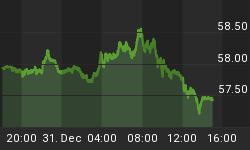The global semiconductor shortage has disrupted auto production in the United States and elsewhere, and will mostly likely last two more years.
Last year, the pandemic caused auto manufacturers to suspend operations, with everybody predicted slowdown in car sales to last.
Following those estimates, the global semiconductor industry arranged to sell more computer chips to other industries. However, at the same time, new car sales picked up in a hurry, causing a growing shortage of semiconductors, a key component of many computerized electronics.
Dan Ives, a tech analyst at investment firm Wedbush Securities, recently said that current "demand is probably 25% higher than anyone would have expected", Bloomberg reported.
The semiconductor shortage affected nearly every industry, but U.S. automakers have been especially hit hard, with some forced to slow or halt production at plants.
General Motors, Ford and Honda have all temporarily closed plants to wait for more supplies of the parts needed for increasingly computerized cars, NPR reported.
GM and Ford alone have warned that they could take a collective $4.5 billion hit to their earnings this year because of the parts shortage.
As a response, cars makers are now finding themselves in the unfortunate position of giving up a few luxuries in their offerings to consumers.
According to Bloomberg, some car makers are leaving out features such as navigation, rearview mirror that monitors for blind spots, digital screens…
And that lack of features doesn’t mean cars will be any less expensive. In fact, the opposite is shaping up to be the reality.
Prices of new vehicles will likely keep climbing as the chip shortage worsens.
According to Edmunds, 13% of those who bought a new car in the US in the last month paid above sticker price, compared to 8% last April
The increased demand and disruption to steady supply chains has now renewed the Biden Administration’s calls to build up domestic semiconductor manufacturing.
"These chips, these wafers — batteries, broadband — it's all infrastructure. This is infrastructure," President Biden said in a sales pitch for his $2-trillion infrastructure plan.
The remark came at the White House virtual meeting in April with 19 CEOs where they discussed the critical supply crunch that is slowing U.S. automobile manufacturing and threatening other sectors, including national security.
Back in February, President Biden said domestic semiconductor manufacturing was a priority for his administration. He also signed an executive order meant to address the global chip shortage.
“This is about making sure the United States can meet every challenge we faced in this new era of pandemics, but also in defense cybersecurity, climate change, and so much more…The best way to do that is by protecting and sharpen and America’s competitive edge by investing here at home,” President Biden said at a press conference
In 1990, the US manufactured about 37% of the world's semiconductors. Today, it only makes about 12%. In the same period, Europe also dropped from producing 35% to only 9%.
An additional concern is that all of the most advanced semiconductors are produced in Asia, and the large portion of the market owned by one company, Taiwan Semiconductor Manufacturing Company (TSMC).
In late March, Intel said it will spend $20 billion to build two separate chip factories at its facility in Chandler, Arizona to challenge Asia dominance.
However, TSMC, the world's largest contract chipmaker, also announced that it would build a $12 billion factory in Arizona. The company also said it will invest $100 billion over the next three years to increase production capacity
European officials also said they were naive to outsource so much of their semiconductor design and manufacturing and now want to double chip production by 2030.

















